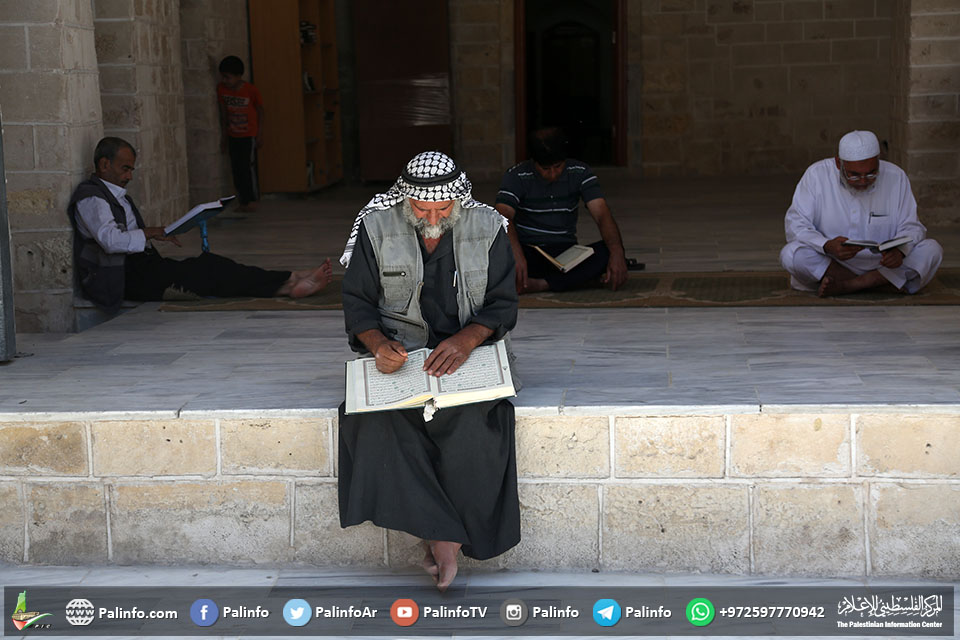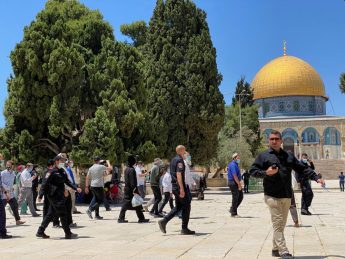Hundreds of Palestinian worshipers flock to al-Umari Grand Mosque in Gaza everyday during Holy Ramadan seeking a provisional let-up from Israeli travel restrictions to al-Aqsa Mosque in Occupied Jerusalem.
Prevented from performing their prayers at holy al-Aqsa Mosque in Occupied Jerusalem hundreds of Muslim worshipers continue to flock to al-Umari Mosque praying for a better future for Palestine and reading the holy Quran.
Covering an overall area of 4100 square meters and made up of a large plaza and ancient walls al-Umari Mosque has been a daily destination to over 4500 worshipers from across the blockaded Gaza Strip.
86-year-old Abu Ahmad has been gracing the site with his presence for the eighth year running during which he has been reading Quran verses for long hours.
“The time I spend at the mosque provides me with a momentary relief from the daily images of destruction and oppression wrought by the Israeli occupation” said Abu Ahmad.
Another worshiper—72-year-old Abu Iyad—usually stays in the mosque from noon prayers to al-Maghrib (evening).
“Reading Quran is a sacred Islamic ritual and I’ll keep doing so until my last breath” vowed Haj Abu Iyad.
Mrs. Umm Hamed Abdeh aged 70 also said al-Umari Mosque reminds her of al-Aqsa Mosque from which she has been banned for years.
“I wish I can visit Occupied Jerusalem and pray at al-Aqsa Mosque before I depart this life” said Umm Hamed with tears in her eyes.
Al-Umari Mosque also known as the Great Mosque of Gaza is the largest and oldest mosque in the Gaza Strip. It was named after the renowned companion of Prophet Muhammad (Peace Be Upon Him) Omar Ibn al-Khattab.
Believed to stand on the site of an ancient Philistine temple the site was used by the Byzantines to erect a church in the 5th century but after the Muslim conquest in the 7th century it was transformed into a mosque.
Described as “beautiful” by an Arab geographer in the 10th century the Great Mosque’s minaret was toppled in an earthquake in 1033.
The mosque is well known for its minaret which is square-shaped in its lower half and octagonal in its upper half typical of Mamluk architectural style. The minaret is constructed of stone from the base to the upper hanging balcony including the four-tiered upper half. The pinnacle is mostly made of woodwork and tiles and is frequently renewed.
















